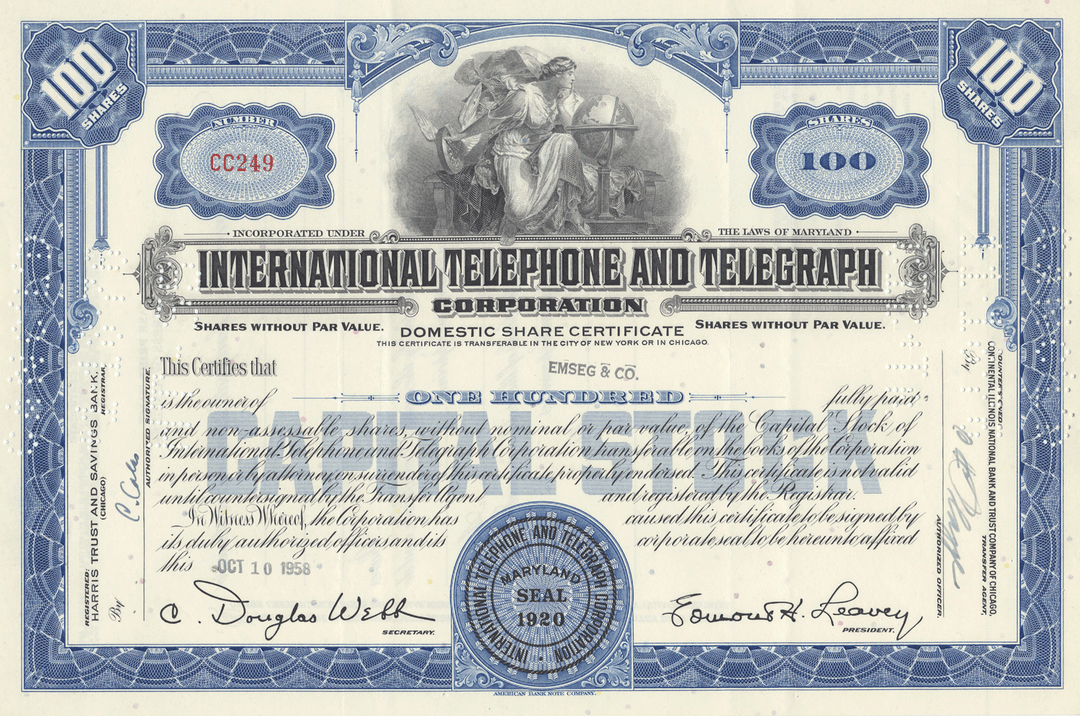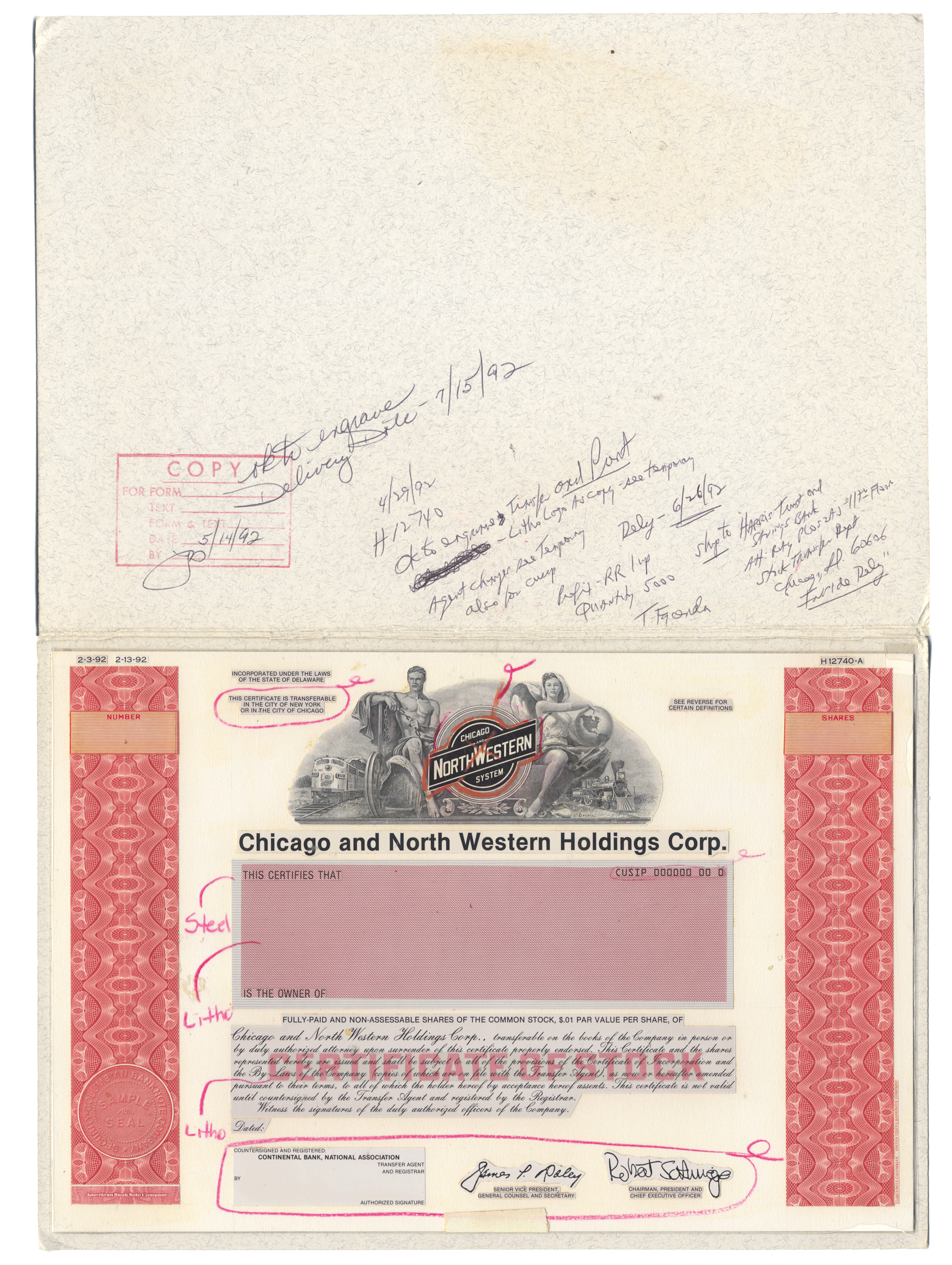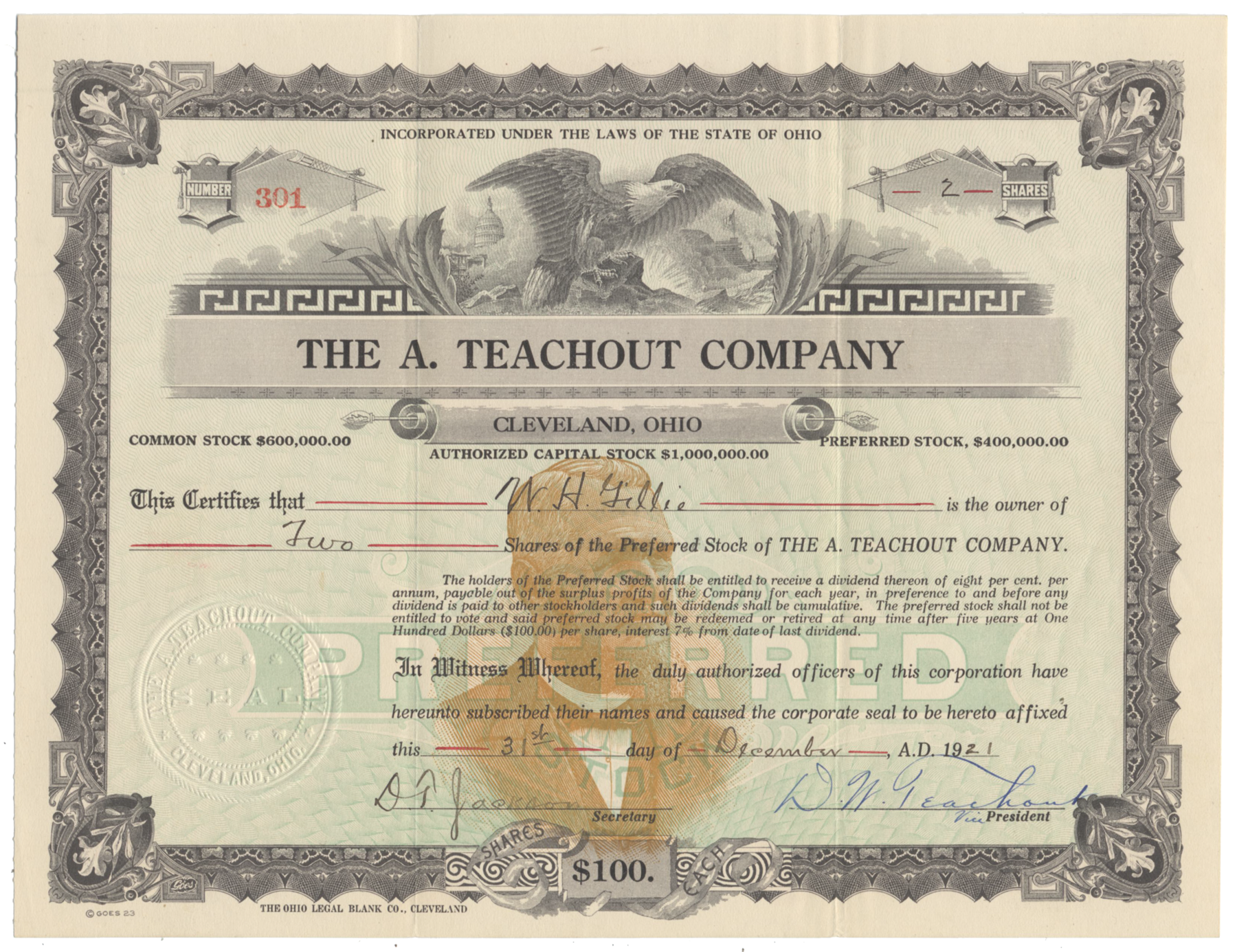
International Telephone and Telegraph Corporation (ITT)
- Guaranteed authentic document
- Orders over $50 ship FREE to U. S. addresses
Product Details
| Company | International Telephone and Telegraph Corporation |
| Certificate Type | Capital Stock |
| Date Issued | 1950's |
| Canceled | Yes |
| Printer | American Bank Note Company |
| Signatures | Machine printed |
| Approximate Size |
11" (w) by 7 1/4" (h) |
|
Product Images |
Representative of the piece you will receive |
| Authentic | Yes |
| Additional Details | NA |
Historical Context
When Harold S. Geneen took the helm of International Telephone & Telegraph in 1959, it was a middle-rung communications concern with operations in Latin America. A decade later ITT was a 350,000-employee colossus with holdings as diverse as Avis Rent-A-Car, Sheraton Hotels, Continental Baking, Aetna Finance, Hartford Insurance, and homebuilder Levitt & Sons. In all, Geneen acquired 350 businesses in 80 countries--often, it is said, after inspecting a company's books for no more than ten or 20 minutes.

A new kind of giant now stalked the earth--and with it a new kind of CEO. While Patterson had been a salesman and Sloan a manufacturing man, Geneen had begun his career as an accountant. That put him in the vanguard of a trend: In 1939 just 7% of CEOs came from financial backgrounds; by 1969 the figure had climbed to 20%. (A decade later it was 31%.) This new generation of polymaths would push Sloan's managerial revolution to its extreme. With the right financial tools, they believed, smart managers could run any assortment of businesses, whether it was (in ITT's case) making lawn products, publishing books, manufacturing auto parts, or selling Twinkies. The product wasn't the important thing. It was all about the numbers.
And Geneen had a supercomputer's capacity for absorbing them. He claimed to digest every monthly report submitted by his 250 division managers. His readings for the annual business plan ran eight feet high. When traveling, it was said, he was accompanied by as many as 14 briefcases. "The drudgery of the numbers," he preached, "will set you free." Then there were the meetings. By Geneen's own reckoning, the company devoted some 200 days a year to "meetings at various organizational levels," the most important of which took place every month in Brussels. There, for four days straight, sometimes 14 hours at a stretch, 120 ITT executives gathered around a green horseshoe table with a large screen displaying statistics. Each executive's presentation was subject to a withering cross-examination by Geneen, who wanted to see not only the numbers, but also the expression of the man presenting them.
For a long span, Geneen made it all work. Earnings grew for 58 consecutive quarters. FORTUNE called him the "man widely regarded as the world's greatest business manager." His many imitators included Gulf & Western's Charles Bluhdorn and W.R. Grace's J. Peter Grace. Yet by the time of his retirement in 1977, the "Geneen machine" was losing steam. ITT had been hamstrung by antitrust suits and discredited by its effort to finance the toppling of Chilean President Salvador Allende. But the slow disintegration of ITT and the other conglomerates had a deeper cause: Managing by the numbers, as opposed to understanding what lay underneath them, couldn't hold together such a crazy-quilt empire.
Oddly, shortly before his death in 1997, Geneen published a book that criticized the modern merger craze. "If you mix beef broth, lemon juice, and flour, you don't get magic," he wrote, "you get a mess."
Related Collections
Additional Information
Certificates carry no value on any of today's financial indexes and no transfer of ownership is implied. All items offered are collectible in nature only. So, you can frame them, but you can't cash them in!
All of our pieces are original - we do not sell reproductions. If you ever find out that one of our pieces is not authentic, you may return it for a full refund of the purchase price and any associated shipping charges.





